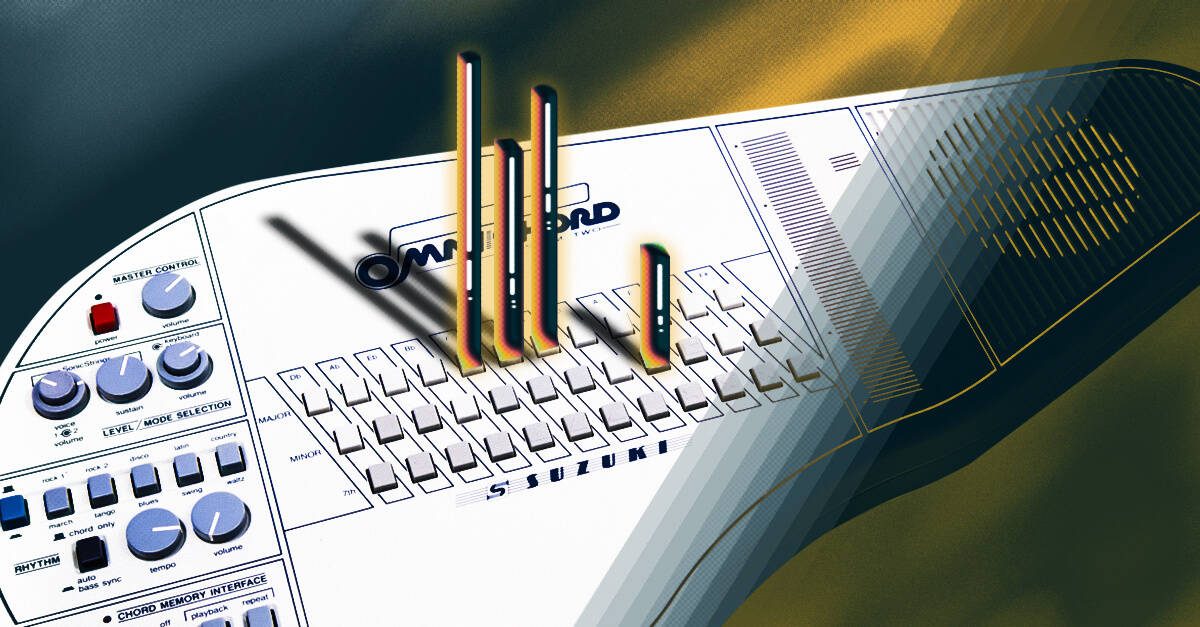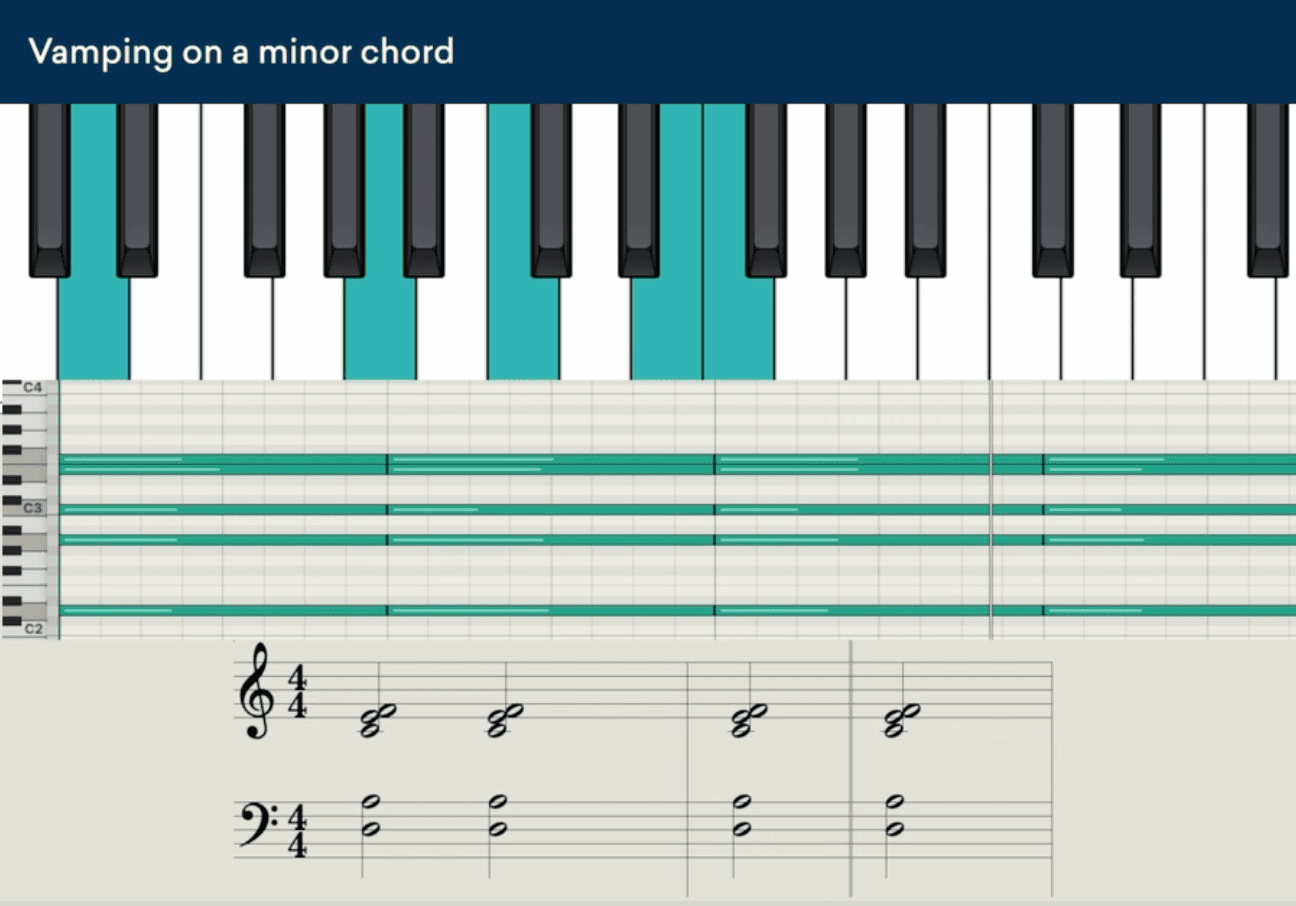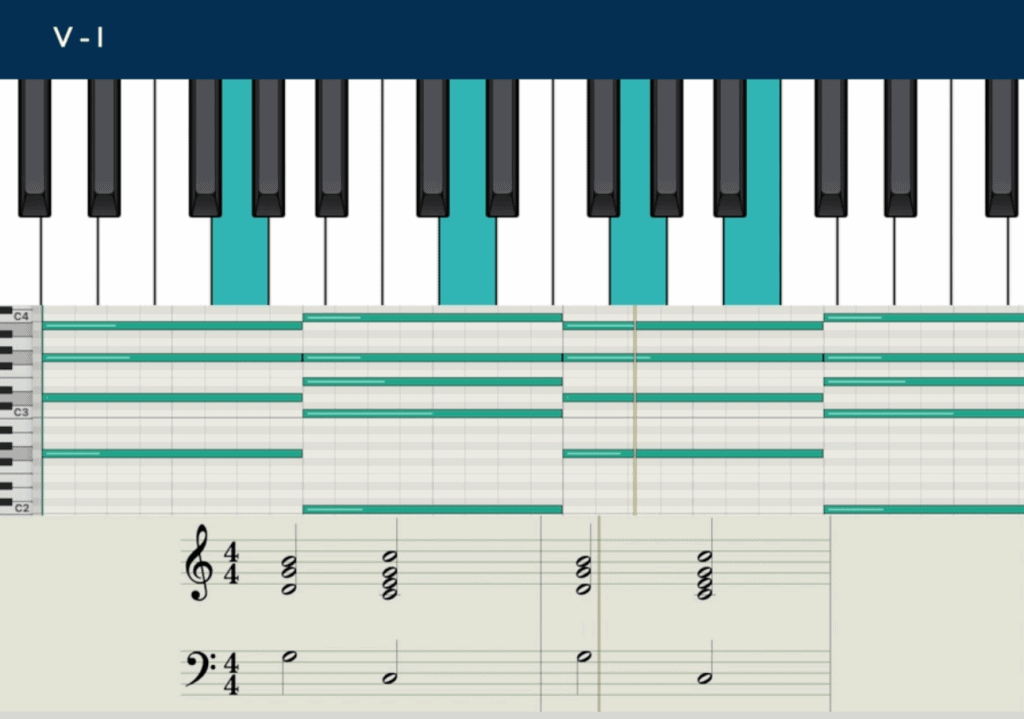Don’t let the abundance of keyboards, synths, and music production terminology overwhelm you. EDM chord progressions adhere to a few fundamental music theory principles.
In this article, we will delve into the basics of chord theory and examine a selection of frequently used chord progressions in electronic music.
Let’s begin our journey.
1. Vamping on a minor chord
Vamping refers to the act of repetitively playing a particular element, such as a minor chord, across multiple bars within a specific section.
This technique is commonly employed in electronic music, where producers prioritize the rhythm, percussion, and sound design elements of the composition.
As a result, many electronic music tracks can be considered atonal, as they often only loosely allude to one or two chords, focusing more on other musical aspects.
While vamping a major chord is also a valid approach, minor chords typically evoke a more emotive and brooding atmosphere. Therefore, I recommend selecting a minor chord for this purpose.
To add variation, consider arpeggiating the chord’s notes and playing them at different octaves. Alternatively, you can create a droning effect by having a sustained chord lingering in the background while the bass line cycles through the pedal tones of the chord.
When working with this type of chord progression, the key to creating an engaging track lies in your arrangement, bass lines, rhythm, and sound design. These factors will ultimately shape the overall interest and impact of your composition, rather than solely relying on the chord progression itself.
2. V – I
Like the vamped chord, this represents the second simplest type of chord progression commonly encountered in EDM and other electronic music genres.
Essentially, the core concept here revolves around the practice of transitioning between two chords chosen by the producer.
In this example of a V – I chord progression, you are essentially shifting between the two most impactful chords within a key.
The duration for which you vamp on these two chords is at your discretion, as the transition between them will consistently sound powerful.
Once again, with this type of chord progression, the true essence lies in the arrangement of rhythms, the sound design of synths and drums, and the manipulation of basslines and arpeggios. These elements play a crucial role in shaping the overall impact and creativity of the composition.
3. I – V – vi – IV
Chord progressions that revolve around the I, IV, V, and vi chords of the major diatonic scale are undeniably the most prevalent chord progressions in music.
The version described here is the most widely used iteration of this type of chord progression. It initiates with the powerful tonic chord and introduces a subtle touch of tension by incorporating the minor chords derived from the 6th degree.
4. VI – VII – i – VI
Minor keys dominate the landscape of modern EDM and pop music composition.
If your goal is to create infectious pop-infused club bangers, familiarizing yourself with a few minor chord progressions can be highly advantageous.
One widely used minor chord progression involves ascending from the 6th to the 7th chord and then returning to the minor tonic chord (which is minor due to the overall minor key). This progression is quite common and can add a captivating dynamic to your musical compositions.
5. i7 – III – v7 -IV
The chord progression adheres to a minor chord progression, specifically, the B Dorian mode, which incorporates a G# instead of the usual G note found in B minor.
This modal characteristic infuses a sense of uplifting brightness due to the IV chord being major instead of minor.
As a result, despite having numerous minor attributes, this contributes to the track’s sunny nature.
6. III (add9) – iv (add9) – v – VI – VII – i7
In genres like EDM and electronic music, tension-building chord progressions play a crucial role in leading up to a drop section where tension is released in the main chorus.
One effective technique to create tension through a chord progression is by ascending through a chord scale towards the tonic chord. This gradual climb builds anticipation and sets the stage for the subsequent release in the chorus section.
7. VI (add9) – i7 – VII (add9) – v
Minor keys don’t have to be gloomy or “sad-sounding” all of the time.
Even within a minor track, it is possible to craft an uplifting chorus by incorporating chord progressions based on the major chords found on the sixth and seventh degrees of the minor key.
Taking the example of Porter Robinson’s “Language,” the chorus introduces an uplifting section that alternates between the major sixth and seventh chords, as well as the one and five chords. This interplay between these chords contributes to the uplifting quality of the section despite the overall minor key context.
8. V – IV (add 9) – vi – I – ii (add 11) – I – IV (add 9)
“The Veldt” by Deadmau5 is a personal favorite of mine because it maintains the same chord progression throughout the entire track.
It serves as an excellent illustration of how the chord bass melody can propel a song forward, while incorporating variation and interest through chord substitutions.
A noteworthy example is when Deadmau5 substitutes the IV chord with a minor 7 suspended 4th ii chord on the second add9 chord. This substitution adds additional tension to the progression, enhancing the overall dynamics of the track.
Conclusion
Creating electronic music involves not only the selection of chord progressions but also the careful consideration of sounds, rhythms, and arrangements that shape your track.
In many instances, it is advisable to choose chords that complement the melody of your composition, particularly when crafting music that calls for a defined chord progression.
Avoid overthinking the process and keep in mind that if it sounds pleasing to your ears, it is indeed a good choice. Trust your musical intuition and let your creativity guide you in creating captivating electronic music.



